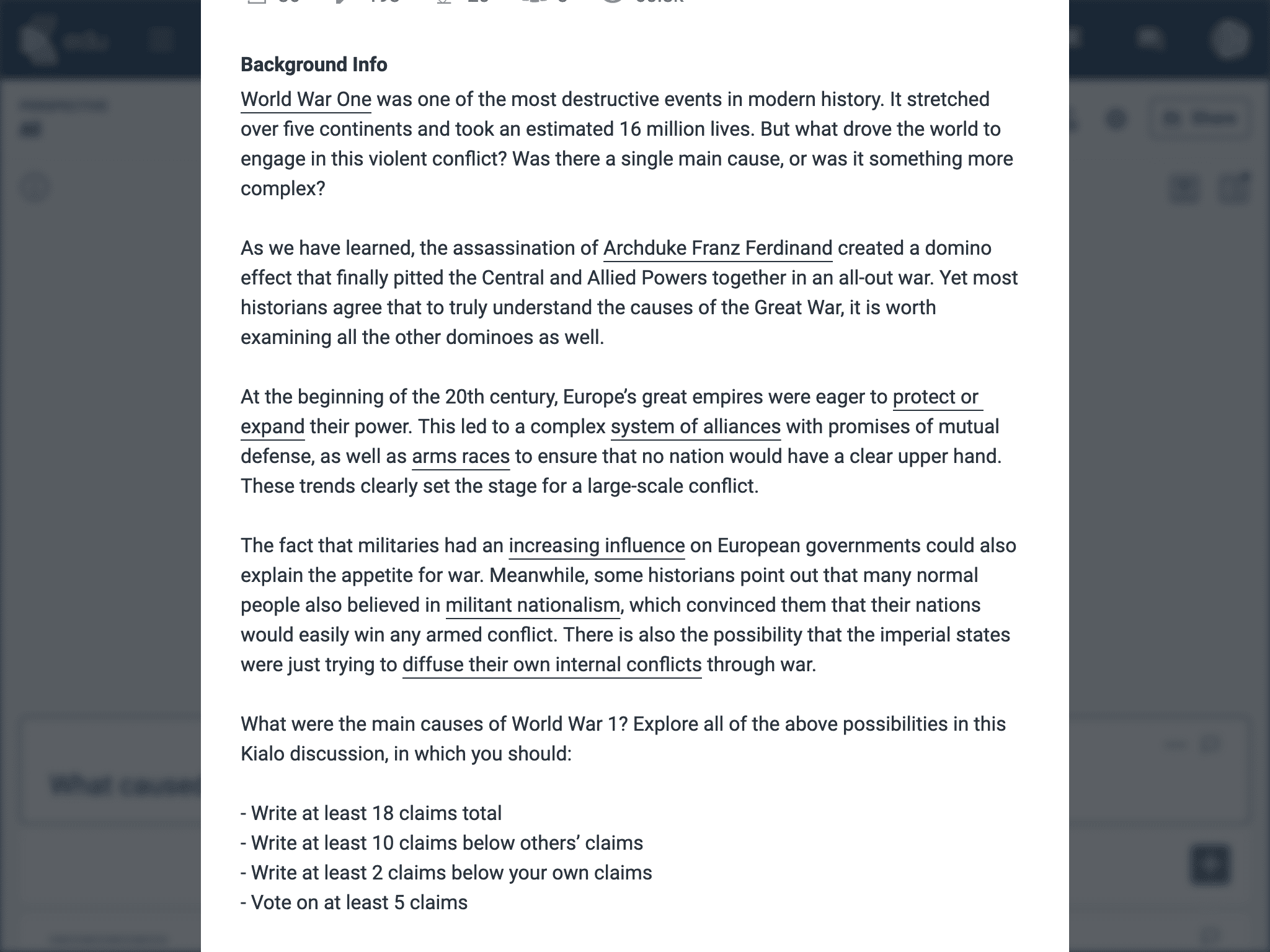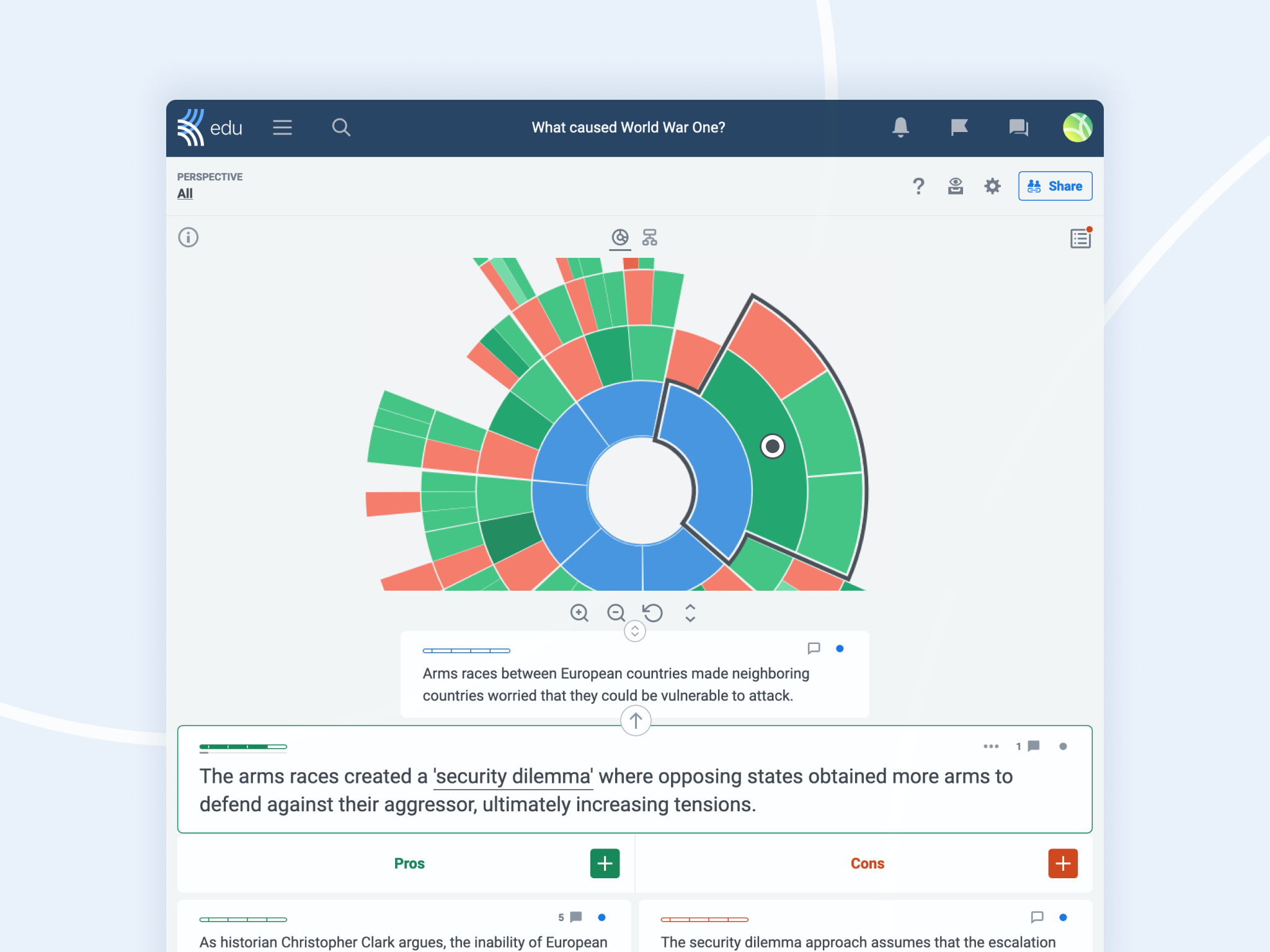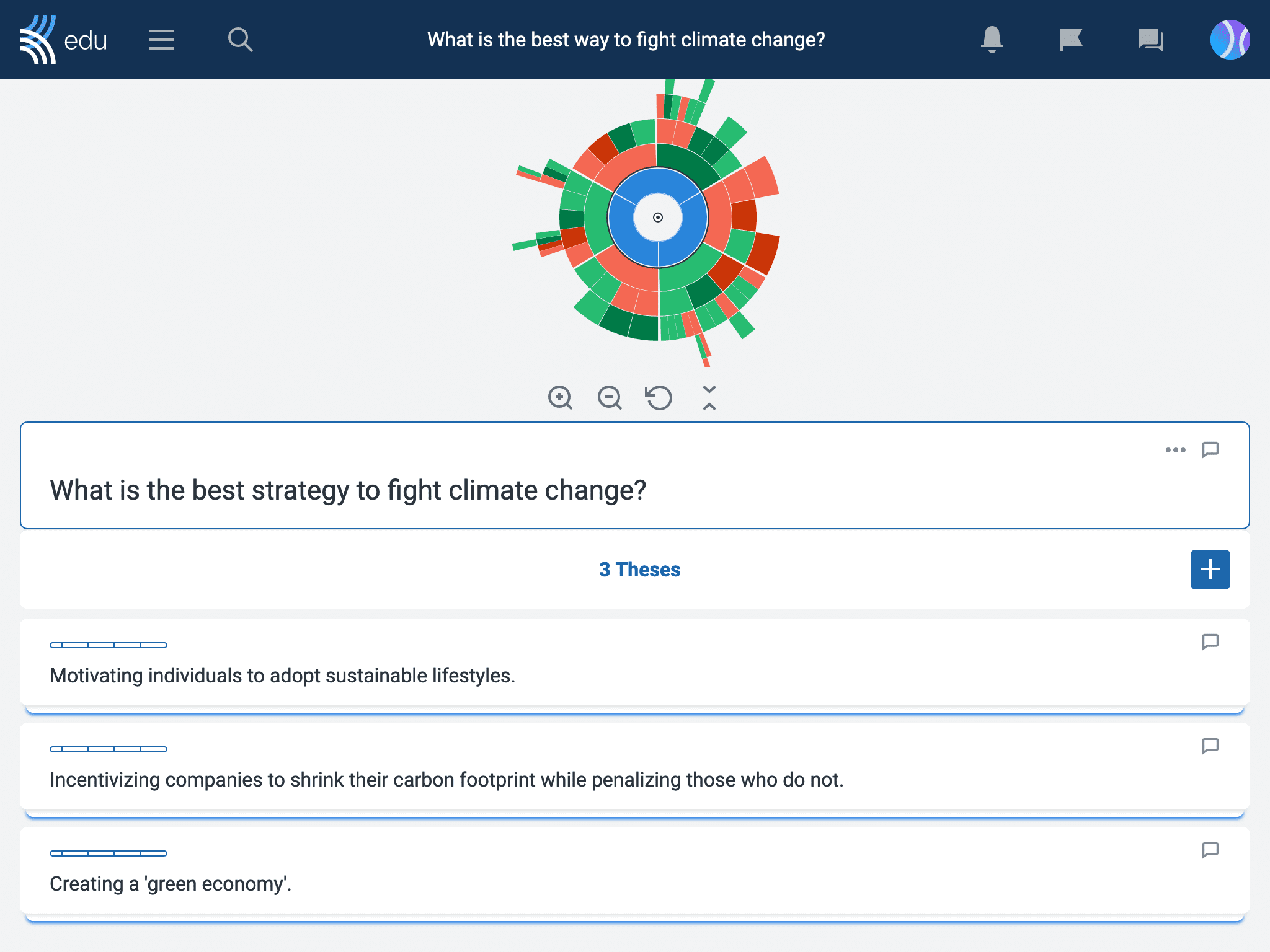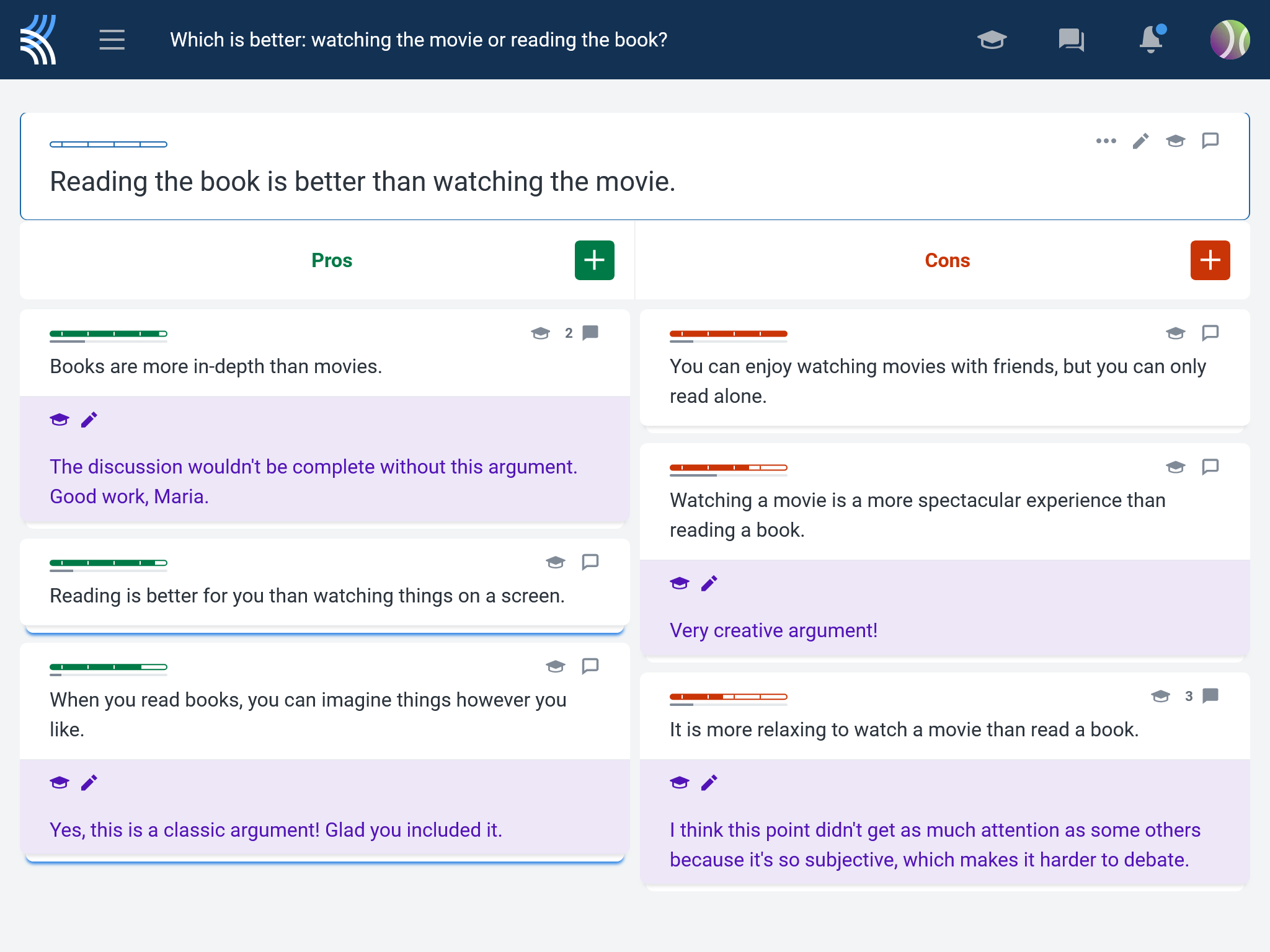With differentiated instruction, educators create meaningful learning experiences to meet students’ diverse needs, no matter their level. In this article, we’ll explore how you can use Kialo Edu to build differentiation into your class discussions, and ensure that every student is supported. Best of all, Kialo is totally free for educators and students alike, so try out these strategies for differentiation with a Kialo discussion today!
What is differentiation in the classroom?
Differentiation is about recognizing that no two learners are the same, and ensuring that all students have the opportunity to grow in the classroom.
Through differentiated instruction, educators identify students who need extra support, those ready to take on more advanced content, or those facing extra challenges in their learning, and effectively adjust their instruction to address those needs.
As one of the pioneers in differentiated instruction, Carol Ann Tomlinson identified key areas educators can adapt to support their students:
- Content: what students are learning
- Process: how students engage with the material
- Product: the way students demonstrate their learning and understanding.
By tailoring these areas, educators foster a learning environment where students are encouraged and supported to reach their potential. Kialo discussions build on these principles as they are a flexible way for students to engage with the target topic area.
That’s because Kialo discussions are great for developing critical skills like communication, reasoning, and critical thinking alongside topic knowledge.
Let’s take a look at some approaches with Kialo for differentiation.
Strategies for differentiation with Kialo discussions
1. Create flexible groupings for differentiated support
Carefully designed groups ensure students feel challenged while receiving the right amount of support to maximize the benefit from group activities. Some students might work together on more advanced material, while students needing additional support might reinforce foundational skills together before progressing.
Alternatively, heterogenous groups can promote peer-to-peer learning and collaboration, fostering deeper understanding for all participants.
With Kialo discussions, easily split students into your desired groupings using Small Group Mode to have each group work on their own copy of a template discussion that you control.

In this case, students will be working on the same thesis, but you can then enter each group’s discussion to offer support or add complexity, whatever the case may be. In this way, educators ensure that all students can thrive regardless of their entry point.
2. Tiered assignments for differentiated content complexity
Tiered assignments allow students to engage with the same task at varying levels of complexity. By providing challenges appropriately matched to students’ skills and existing knowledge, educators can foster growth without overwhelming students.
In a Kialo discussion, advanced students might dive into a more abstract or open-ended question to explore multiple perspectives and build more nuanced arguments. Meanwhile, students continuing to build their skills might engage with a more straightforward thesis, working on key areas to deepen their understanding.
Alternatively, you might differentiate by assigning partially developed discussions and starter claims to certain students, while challenging others to develop their discussion from scratch.
3. Differentiated input material
By providing diverse learning resources, educators can offer materials that align with their students’ level of progress in a topic. With clear guidance from their teacher, students can even choose from the provided materials, helping them develop the ability to recognize their own learning needs.
The Background Info in a Kialo discussion is an ideal place to put foundational resources for students less confident in the topic area, or supplementary materials for students ready to explore more advanced ideas. Have students refer to this section before and during a discussion to allow students to revisit concepts at their own pace.

4. Different modes of demonstrating learning
Offering students choice in how they demonstrate learning allows them to showcase their abilities and engage with the content in a way that suits their individual strengths and interests.

For example, you can use a Kialo discussion as an effective alternative to an essay. Its short, focused contributions offer a fresh format for students while still closely reflecting the approach and intent of an argumentative essay.
5. Language support for language learners and less confident writers
Language support provides valuable scaffolding for those acquiring the instructional language and students who need writing support, by helping students structure and communicate their ideas more clearly.
When students are completing a Kialo discussion, educators can provide sentence stems and useful reference language appropriate to the age group, such as “Author’ argues that…,” “Statistics indicate that…”, and “This is important because…” to guide students.
This makes it easier for these students to engage with the task and makes them more capable of expressing their thoughts, boosting both participation and confidence.
6. Integrate Kialo discussions into project-based learning
Project-based learning accommodates diverse learners by offering multiple entry points and degrees of complexity, while engaging students in meaningful real-world tasks.

Kialo discussions can play numerous roles in project-based learning. As a versatile tool, students might use a Kialo discussion to:
- Explore background knowledge to the topic.
- Compare solutions to a challenge with a multi-thesis discussion.
- Place the driving question at the center of the discussion.
- Form part of the project deliverable to illustrate student thinking and research.
- As a support for a final presentation of the project.
This approach gives educators the flexibility to tailor the content, process, and product to meet the needs of their students.
7. Using Kialo discussions as an anchor activity
An anchor activity lets students work independently on meaningful tasks during free moments, providing opportunities for students to reinforce foundational concepts or explore a more complex question. This engages fast finishers and gives others the time they need, thus students can work at their own pace.
A great low-prep anchor activity is to assign a Kialo discussion for each individual student. Having a personal discussion allows students to reinforce curricular content, while also providing plenty of scope to develop it further.
Students can revisit their discussion as and when they have time, while educators can easily check in on their progress to offer feedback and guidance.


